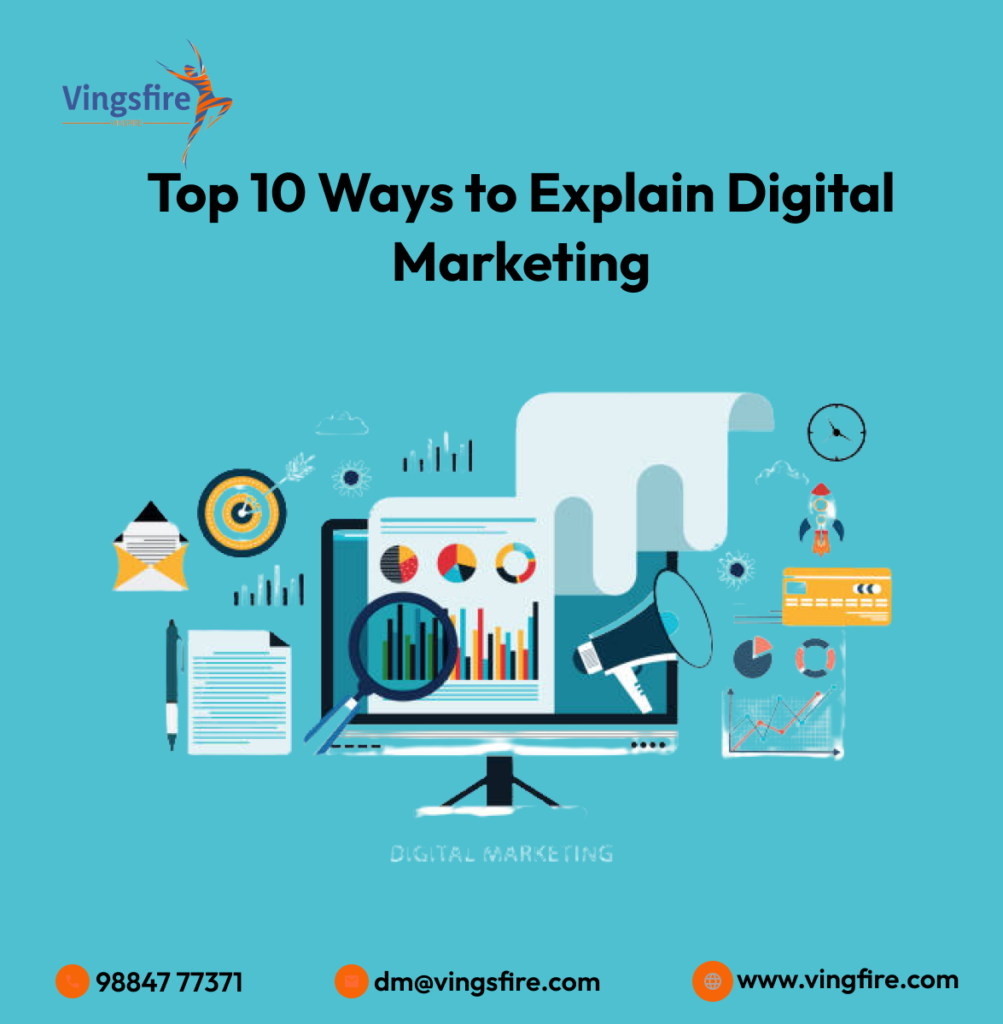
Digital marketing, a term that has become ubiquitous in the modern business landscape, refers to the promotion of products or services using digital technologies. In an era dominated by the internet, smartphones, and social media, understanding digital marketing has become essential for businesses aiming to thrive in the digital age. In this comprehensive guide, we will explore the top 10 ways to explain digital marketing, delving into its intricacies, strategies, and significance in today’s competitive marketplace.
Definition and Scope:
Digital marketing encompasses a broad range of online tactics and channels aimed at reaching and engaging with target audiences. It includes techniques such as search engine optimization (SEO), social media marketing, email marketing, content marketing, and more.
Targeting and Personalization:
One of the key advantages of digital marketing is its ability to precisely target specific demographics and personalize marketing messages based on user data and behavior. This targeted approach enhances the effectiveness of campaigns and improves the overall return on investment (ROI).
Accessibility and Reach:
Unlike traditional marketing methods, it allows businesses to reach a global audience instantaneously. With the proliferation of internet-connected devices, brands can connect with consumers across various platforms and devices, breaking geographical barriers. Measurable Metrics: One of the significant benefits of digital marketing is its measurability. Unlike traditional marketing, where gauging the success of a campaign can be challenging, digital marketings offers a plethora of metrics and analytics tools to track performance in real-time. These metrics include website traffic, conversion rates, click-through rates, engagement metrics, and more.
Cost-Effectiveness:
Digital marketing can be significantly more cost-effective than traditional marketing channels. With options like pay-per-click (PPC) advertising and social media advertising, businesses can allocate their budgets more efficiently and achieve a higher ROI compared to traditional advertising methods.
Flexibility and Adaptability:
In the fast-paced digital landscape, trends and consumer behaviors evolve rapidly. It offers the flexibility for businesses to adapt their strategies in real-time based on market changes, consumer feedback, and emerging technologies.
Content-Centric Approach:
Content lies at the heart of digital marketing. Whether it’s blog posts, videos, infographics, or social media posts, compelling and relevant content plays a pivotal role in attracting and engaging audiences. Content marketing strategies aim to provide value to consumers, establish brand authority, and drive conversions.
Engagement and Interactivity:
Digital marketing enables brands to engage with their audience in meaningful ways. Through social media platforms, live chats, interactive content, and personalized messaging, businesses can foster two-way communication, build relationships, and enhance customer loyalty.
SEO and Online Visibility:
Search engine optimization (SEO) is crucial for improving a brand’s online visibility and ranking on search engine results pages (SERPs). By optimizing website content, meta tags, backlinks, and other factors, businesses can enhance their chances of being discovered by potential customers searching for relevant products or services. Integration and
Omnichannel Strategy:
Successful digital marketing strategies often involve the integration of multiple channels and touchpoints to create a seamless customer experience. An omnichannel approach ensures consistency across all platforms and maximizes engagement at every stage of the customer journey.
In conclusion, digital marketing represents a dynamic and ever-evolving field that continues to shape the way businesses connect with consumers in the digital age. By understanding the various facets of digital marketings and implementing effective strategies, businesses can leverage the power of digital technologies to drive growth, enhance brand visibility, and achieve their marketings objectives in today’s competitive landscape.


